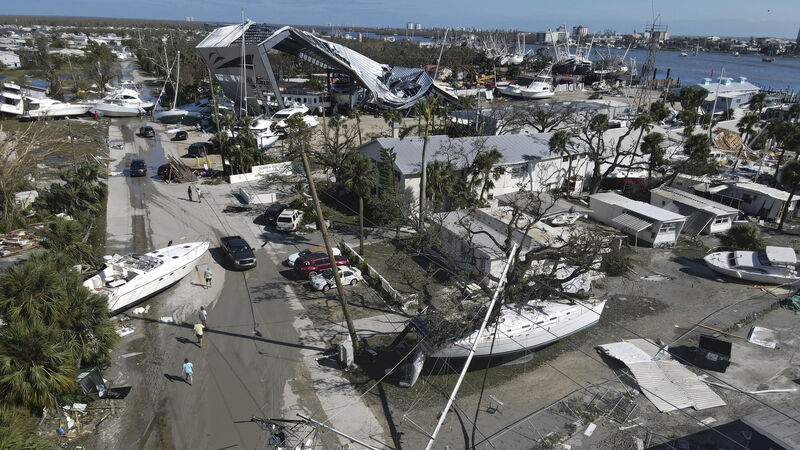Hurricane Ian heads for Carolinas after pounding Florida

A revived Hurricane Ian is heading for South Carolina, with US forecasters predicting floods after the megastorm caused catastrophic damage in Florida and left people trapped in their homes.
With all of South Carolina’s coast under a hurricane warning, a steady stream of vehicles left Charleston on Thursday, with people having heeded officials’ warnings to seek higher ground.
Storefronts were sandbagged to ward off high water levels in an area prone to inundation.
Along the Battery area at the southern tip of the city’s peninsula, locals and tourists alike took selfies against the choppy backdrop of whitecaps in Charleston Harbour as palm trees bent in gusty wind.
With winds holding at 85mph, the National Hurricane Centre’s update at 2am on Friday (7am BST) placed Ian about 175 miles south-east of Charleston and forecast a “life-threatening storm surge” and hurricane conditions along the Carolina coastal area later.
Hurricane-force winds are expected across coasts of South Carolina and southeastern North Carolina beginning early Friday. Be ready for tree damage. #Ian pic.twitter.com/AMLqg1ZR2I
— National Weather Service (@NWS) September 30, 2022
The hurricane warning stretched from the Savannah River to Cape Fear, with flooding rains likely across the Carolinas and southwestern Virginia, the centre said.
An earlier forecast predicted a storm surge of 5ft into coastal areas of Georgia and the Carolinas.
Rainfall of up to 8in threatened flooding from South Carolina to Virginia.
There is a danger of life-threatening storm surge from #Ian through Friday along the coasts of northeast Florida, Georgia, and South Carolina.
— National Weather Service (@NWS) September 30, 2022
Follow any advice given by local officials. pic.twitter.com/SYsJuOyLOe
In Florida, rescue crews piloted boats and waded through riverine streets on Thursday to save thousands of Floridians trapped amid flooded homes and buildings shattered by Hurricane Ian.
Florida Governor Ron DeSantis said at least 700 rescues, mostly by air, were conducted on Thursday involving the US Coast Guard, the National Guard and urban search-and-rescue teams.
Ian had come ashore on Wednesday on Florida’s Gulf Coast as a monstrous Category 4 hurricane, one of the strongest storms ever to hit the US.

It flooded homes on both the state’s coasts, cut off the only road access to a barrier island, destroyed a historic waterfront pier and knocked out electricity to 2.6 million Florida homes and businesses – nearly a quarter of utility customers.
Some 2.1 million of those customers remained in the dark days afterward.
Climate change added at least 10% more rain to Hurricane Ian, according to a study prepared immediately after the storm, said its co-author, Lawrence Berkeley National Lab climate scientist Michael Wehner.
I want to thank all the first responders, National Guard and Coast Guard members, and search and rescue personnel who are working to get Florida families to safety. I also want to thank everyone at FEMA and other federal personnel.
— President Biden Archived (@POTUS46Archive) September 29, 2022
You represent the best of America. pic.twitter.com/mKe4EVPprx
At least four people were confirmed dead in Florida, while three other people were reported killed in Cuba after the hurricane struck there on Tuesday.
National Guard troops are being positioned in South Carolina to help with the aftermath, including any water rescues. In Washington, US President Joe Biden approved an emergency declaration for the state, in order to speed up federal assistance for recovery once Ian passes.
The storm is on track to later hit North Carolina, forecasters said. North Carolina Governor Roy Cooper urged residents to prepare for torrents of rain, high winds and potential power outages.










